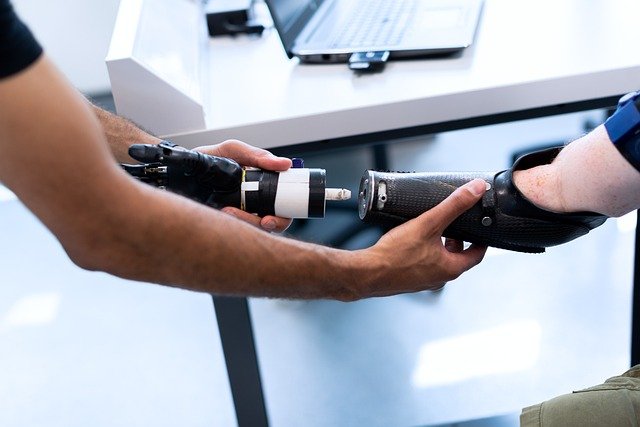Losing strength or movement in your arm due to a brachial plexus injury can change your everyday life. For many, this kind of injury brings not only physical limits but emotional stress too. When movement doesn’t return even after therapy or surgery, it’s natural to look for new ways to get back your independence. That’s where myoelectric arms can make a real difference. These advanced prosthetic arms respond to muscle signals and offer better control, smoother movements, and a more natural experience.
At Robobionics, we work with people across India living with brachial plexus injuries. We design and deliver prosthetic solutions that focus on both function and comfort. Myoelectric arms are one of the most promising options today. They allow users to regain essential functions like gripping, lifting, and stabilizing — and they are getting smarter and more user-friendly with every update. In this article, we’ll explore how these arms work, who they are for, and how we ensure a proper fit.
How Myoelectric Arms Work
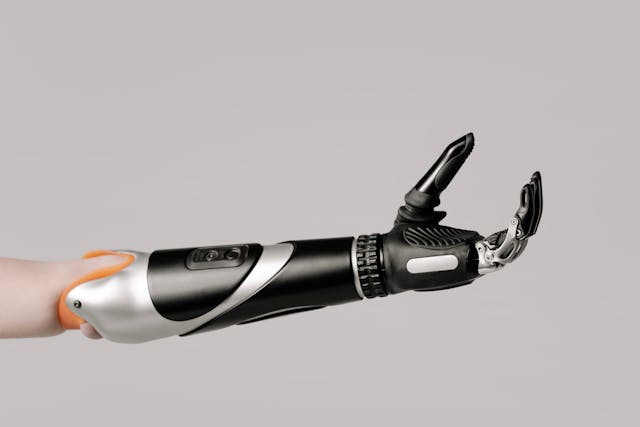
A myoelectric prosthetic arm uses muscle signals to control its movements. When a person thinks about moving their hand or arm, the brain sends signals to the muscles. Even if the limb no longer moves naturally due to nerve damage, some muscles may still respond to these thoughts. Sensors placed on the skin pick up those muscle signals and send them to the prosthetic’s controller. That signal is then translated into action — like opening the hand or turning the wrist.
This process allows users to control their prosthetic in a more natural way. Unlike body-powered devices, which require physical effort like shoulder movement, myoelectric arms don’t rely on cables or straps. Instead, they follow the body’s own signals. This makes the experience smoother, more intuitive, and less tiring over time. It can feel almost like the prosthetic is responding to your thoughts, because in a way — it is.
At Robobionics, we help users identify which muscles are still active after a brachial plexus injury. This is an important step before fitting a myoelectric device. Our team uses surface EMG testing to locate usable signals and decide where to place the sensors. Once the system is mapped properly, we customize the prosthetic to respond to your body’s unique signals and movement patterns.
Benefits of Myoelectric Control for Brachial Plexus Patients
For people living with partial or complete arm paralysis, myoelectric prosthetics can be a game-changer. These devices allow users to perform meaningful tasks without needing constant help from others. Everyday actions like holding a water bottle, eating with a spoon, or turning a doorknob become possible again — not just in a lab, but in real life. This kind of control builds confidence and reduces the stress of depending on one hand alone.
Another major benefit is comfort. Myoelectric arms reduce the strain placed on the neck, back, and unaffected shoulder. Many people with brachial plexus injuries tend to overuse their other arm, which can lead to fatigue, poor posture, or even injury over time. By distributing movement between both sides of the body, a prosthetic can help maintain better balance and avoid future problems.
Robobionics designs myoelectric systems that are lightweight, breathable, and easy to wear all day. We focus on long-term use, not just short-term fixes. Our Grippy™ system, for example, comes with multiple grip modes, allowing users to adjust the hand’s movement based on the activity. This level of flexibility gives people more freedom to live, work, and move on their own terms.
What Makes a Good Candidate for a Myoelectric Arm

Myoelectric prosthetics are not ideal for everyone. The success of these devices depends on whether the user still has enough muscle activity in the upper arm, chest, or shoulder. If the injury is very severe and there’s no muscle signal at all, the device may not be able to detect enough input to work correctly. That’s why a detailed evaluation is always the first step before recommending this type of prosthetic.
Candidates also need to have a basic level of skin health, comfort with technology, and the willingness to practice using the device regularly. Since learning to control the prosthetic takes time, users need to commit to training and rehab. Children and adults with brachial plexus injuries who meet these conditions usually respond well to myoelectric solutions, especially when fitted early and supported with proper training.
At Robobionics, we offer hands-on trials to test signal strength and muscle control. We use this data to help patients decide if a myoelectric arm will work for them. Even if the initial signals are weak, we can explore hybrid systems that use a mix of body-powered prosthetics and electronic features. Every user is unique, and our team takes time to build a plan that matches your current ability and future goals.
Fitting the Prosthetic: What to Expect
The fitting process is just as important as the technology inside the prosthetic. If the arm doesn’t fit well, it won’t be comfortable — and users may stop wearing it. That’s why every myoelectric arm must be customized to the user’s body, movement range, and signal pattern. The better the fit, the easier it is to control the device, and the more natural it feels to wear it throughout the day.
The fitting begins with scanning or casting the limb to create a socket — the part of the prosthetic that holds onto your body. This socket must be snug, secure, and breathable. It should also hold the sensors in place without sliding or causing skin irritation. Once the socket is ready, the hand and elbow parts are attached and programmed to respond to your specific muscle signals.
Robobionics takes a careful approach to every fitting. We check the alignment, socket comfort, and sensor response multiple times before final delivery. We also let users test the device during basic tasks like gripping a pen or lifting a cup. If anything feels off, we make immediate adjustments. A great fit is not just about physical measurements — it’s about how the device works with your body in motion.
Adapting to Daily Life With a Myoelectric Arm
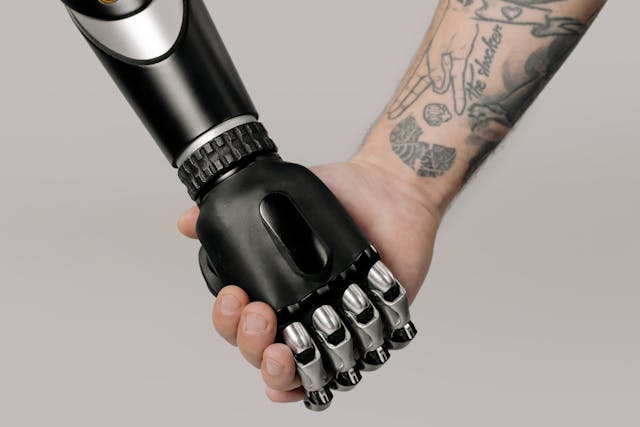
Once the prosthetic is fitted and programmed, the next step is learning how to use it in everyday life. At first, the movements may feel slow or awkward. You might open the hand when you meant to close it or find it hard to hold certain items. But with practice and proper guidance, the prosthetic becomes more familiar — and eventually, it starts to feel like a natural extension of your body.
Daily routines are the best training ground. Tasks like brushing teeth, holding a bag, or eating breakfast give you the chance to practice muscle control in real situations. These actions help you get used to how much signal is needed, how to time the grip, and how to adjust the angle of your wrist. As your skill grows, you’ll feel more confident using the device in public or at work.
Robobionics supports this journey with home training guides, therapist collaboration, and gamified rehab tools that make learning fun and less frustrating. We also provide support calls during the first few weeks to answer questions and fine-tune the settings. Our goal is not just to give you a device, but to make sure you know how to live with it successfully, every single day.
Maintenance, Charging, and Long-Term Care
Like any smart device, a myoelectric arm needs regular care. The sensors and motors are durable, but they work best when cleaned and checked from time to time. The device also needs to be charged — usually overnight — depending on how much it’s used during the day. Modern systems are built to be energy-efficient, so users can go through a normal day without worrying about the battery running out.
Maintenance also includes checking the socket fit. As your body changes over time — due to weight changes, muscle growth, or skin changes — the socket may need adjustments. Loose sockets can cause signal errors or discomfort, while tight sockets may lead to skin issues. That’s why scheduled follow-ups are important. A good prosthetic is one that evolves with you.
At Robobionics, we provide full aftercare service with free check-ins during the first year, and quick replacements for worn-out parts. Our local repair centers and remote support options mean you never have to wait too long for help. We also keep a record of your settings, so upgrades or changes can happen smoothly whenever you’re ready for the next step.
The Role of Training and Support Systems
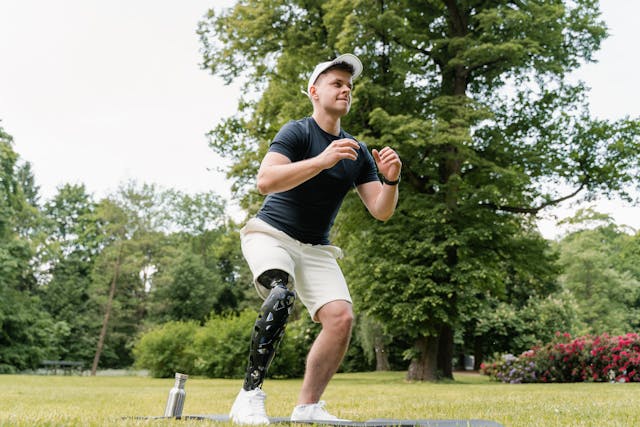
Learning to use a myoelectric prosthetic is not something you do alone. A strong support system — made up of therapists, family members, and experts — makes the journey smoother. Training sessions are not just about teaching the hand to move. They’re about helping the user stay motivated, reduce frustration, and celebrate small wins along the way.
Therapists play a key role in helping the brain and body work together again. They guide exercises that teach the user how to trigger the correct muscle signals and combine different movements for real-life tasks. Family members can support by reminding the user to wear the device regularly and practice without pressure. Encouragement goes a long way when building a new skill.
Robobionics is proud to be part of each user’s support system. We offer personalized onboarding, routine check-ins, and a community of users who share tips and success stories. We also train local therapists and clinics to assist our users across India. Our goal is not just to provide a high-tech arm — it’s to give you a strong foundation of care and support from the moment you start.
Common Challenges and How to Overcome Them
Even with the best technology, there are challenges along the way. Some users struggle with signal strength, especially if the muscles are weak or inconsistent. Others may find the device tiring to use at first or feel unsure about wearing it in public. These are normal concerns, and the key is to address them early with the right guidance and tools.
Signal-related issues can often be solved by repositioning sensors or improving muscle strength with focused therapy. Fatigue usually improves as your body gets used to the movements. Social confidence takes time but grows with each successful task. The first time you shake someone’s hand or eat at a restaurant using the prosthetic, you’ll feel the shift — and that feeling builds with practice.
Robobionics helps users handle these hurdles with kindness and practical solutions. Our team is available for troubleshooting, emotional support, and technical fixes. We believe that every challenge is part of the process — not a reason to give up. With patience and consistency, success always follows.
Real-Life Impact and User Stories
The true value of a myoelectric prosthetic is seen in the lives it changes. We’ve worked with students, professionals, homemakers, and athletes — each with a unique story. One user, a young man from Pune, regained the ability to hold tools and type again after years of living with limited motion. Another, a teacher from Delhi, returned to the classroom with more comfort and confidence after fitting her Grippy™ myoelectric arm.
These stories remind us that prosthetics are more than just devices. They are keys to freedom. They let people do more, go further, and feel stronger. Each step — from the first fitting to long-term success — is a milestone worth celebrating. And every journey is different, shaped by effort, attitude, and the right kind of support.
At Robobionics, we are honored to be part of these journeys. Our goal is not just to provide high-quality prosthetics, but to walk beside you — every step, every challenge, and every success along the way.
Comparing Myoelectric Arms with Other Prosthetic Options

Choosing the right prosthetic can feel overwhelming, especially when there are different types available. For someone with a brachial plexus injury, it’s important to understand how a myoelectric arm compares to other options, so the decision is based on your needs, goals, and lifestyle. Each type of prosthesis has its own strengths, and the best choice often depends on what kind of function you want to regain.
Body-powered arms use a system of cables and straps to move the hand or hook through shoulder motion. These devices are durable and simple, but they often require more effort to use and may feel less natural. Passive prosthetics are mainly cosmetic or used to support posture, but they don’t provide active movement. While these options can be helpful in some cases, they may not offer the control and flexibility that many users want for daily tasks.
Myoelectric arms, by contrast, provide active, intuitive movement without needing extra body motion. They work by detecting muscle signals and turning them into smooth, real-time hand or wrist actions. For people who want more natural movement, better appearance, and comfort without physical strain, a myoelectric solution is often the best fit. At Robobionics, we help each user weigh the pros and cons carefully so you can make the choice that feels right — and works best for your everyday life.
Cost Considerations and Affordability in India
One of the most common concerns people have when looking at myoelectric prosthetics is cost. These devices are more advanced than traditional options, and that does reflect in their price. However, when you consider what you gain — independence, time saved, long-term comfort, and reduced reliance on others — the value becomes very clear. For many users, a myoelectric arm becomes more than a device. It becomes an investment in their future.
That said, we understand cost is still an important factor for families across India. That’s why Robobionics is committed to making high-quality prosthetics more accessible. Because we design and manufacture our devices locally, we’re able to offer world-class solutions without the high costs of imports. We also provide EMI plans, CSR-backed funding, and connections to NGOs and insurance partners that help reduce the financial burden.
We want everyone who needs a prosthetic to feel empowered, not discouraged. During your consultation, we’ll walk you through pricing transparently and help you understand your options. Our goal is to make sure cost never comes in the way of recovery. If a myoelectric arm is the right choice for you, we’ll work with you to find a way to make it possible.
The Future of Myoelectric Technology at Robobionics
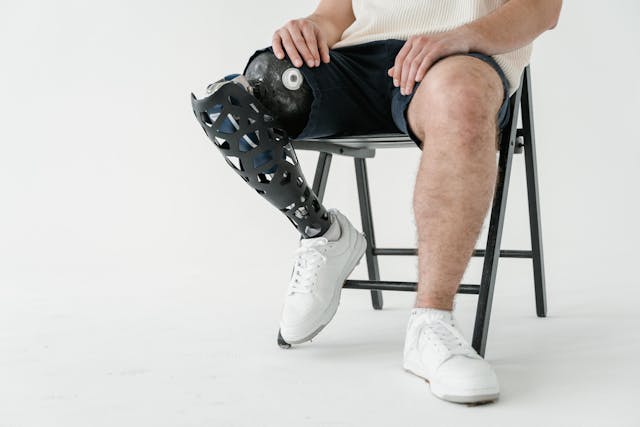
Prosthetic technology is evolving fast, and we’re proud to be leading that change here in India. At Robobionics, we’re constantly improving how our myoelectric arms respond, how they feel, and how well they integrate into everyday life. From improving battery life to adding smarter sensors and grip patterns, our mission is to make every generation of devices more advanced — and more user-friendly.
We’re also developing tools that help users train better and faster. Our gamified rehab programs and mobile-based support tools are helping users learn control in a fun, engaging way. We’re working closely with therapists, engineers, and real users to refine our products in ways that truly serve people — not just look good on paper. We test everything in real Indian environments, from crowded trains to long workdays, so our devices are tough, responsive, and ready for anything.
If you’re thinking about the future, so are we. Whether you’re new to prosthetics or ready to upgrade your current device, Robobionics is here to offer the next level of care, innovation, and empowerment. We’re not just building prosthetics — we’re building possibilities.
Conclusion: Power, Possibility, and a Fresh Start
A myoelectric arm is more than a tool — it’s a new beginning. For people living with brachial plexus injuries, it brings back the ability to do things that once felt lost. It turns thought into motion, effort into results, and hope into action. While the journey takes time and care, the rewards are real and life-changing.
At Robobionics, we combine advanced technology with deep human care. Our myoelectric arms are built for Indian users, backed by local support, and designed with comfort and performance in mind. Whether you’re just exploring options or ready to start, we’re here to guide you with clarity and care.
If you’re ready to discover what a myoelectric arm can do for you, book a free consultation with Robobionics today. Try a demo, meet our team, and take the next step — toward movement, independence, and a better tomorrow.



